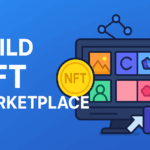Bitcoin Ordinals utilize an open-source protocol that assigns a unique identity to each Satoshi (Sat) individual. Satoshis are the smallest units of Bitcoin, named after the creator of Bitcoin, Satoshi Nakamoto. The protocol adeptly adds data to these Sats and enables consumers of Ord software to track them using an Ordinal numbering scheme. You can learn about bitcoin ordinals and how they work from this editorial.
To a greater extent, this primarily assigns a numerical value to each Satoshi based on numerous factors. These factors include the exact block height where Satoshi first appeared and when Satoshi was mined into circulation. Ord software lets customers monitor each Satoshi. Furthermore, the system embeds content within them to create Bitcoin-specific digital artefacts. The users can trade and transfer these uniquely identified Satoshis just like any other standard Bitcoin unit.
The Benefits of Bitcoin Ordinals
- Art, culture, and money are all represented – Casey explains how older forms of money were linked to art and culture. Money used to be in the form of carved beads and art. Ordinal inscriptions are its modern equivalent.
- Market demand is being met – Casey mentions the enormous popularity of NFTs. He believes that Ordinals provide the right product-market fit.
- Onboarding users to the Bitcoin network – Casey believes that Ordinals can entice more people to use Bitcoin.
How do they function?
The Ordinal Protocol is split into two sections:
- Ordinal theory: This is the method for allocating Satoshi numbers to track, transfer, and assign value.
- Inscription: The method of linking content to a Satoshi using the Ord software and the unique number generated by the software. The Ord software integrates content into real Satoshis but does so through a system of numbers unique to the Ord software.
The Ordinal Theory
Ordinals enable you to assign a unique identification value to each of the relevant 2.1 quadrillion Satoshis that will ever be wholly created.
Satoshis each have a unique numerical value that serves as their serial number. The system produces this serial number based on how Satoshi corresponds to other periodic events that occur on the Bitcoin blockchain, such as:
Blocks:
Batches of transactions are committed to the Bitcoin blockchain every ten minutes. Blocks are the biggest attraction that Ordinals use to evaluate their numerical value.
Difficulty adjustment periods:
Every 2,016 blocks, the Bitcoin protocol modifies its mining difficulty goal based on the computational power required to sustain the network (about every two weeks). This is referred to as the hash rate.
Epochs of halves:
After every 210,000 blocks, the system reduces the amount of new Bitcoin entering circulation by half every four years. Three halvings have occurred since the inception of Bitcoin.
Cycles:
A conjunction occurs every six halvings when simultaneous difficulty adjustment and halving occur. Because halvings occur every four years, conjunctions occur every 24 years. Ordinals track conjunctions as the least common event, and the time between conjunctions is known as a cycle.
A growing number of people want to start their own exchange platform with the help of a Cryptocurrency Exchange Script or a good Bitcoin Exchange Script.
Final Words
The actual consequences of Ordinals are still being felt, but one thing is sure: Ethereum and Bitcoin blockchain enthusiasts are excited about the new possibilities that these digital artifacts offer.






















0 Comments